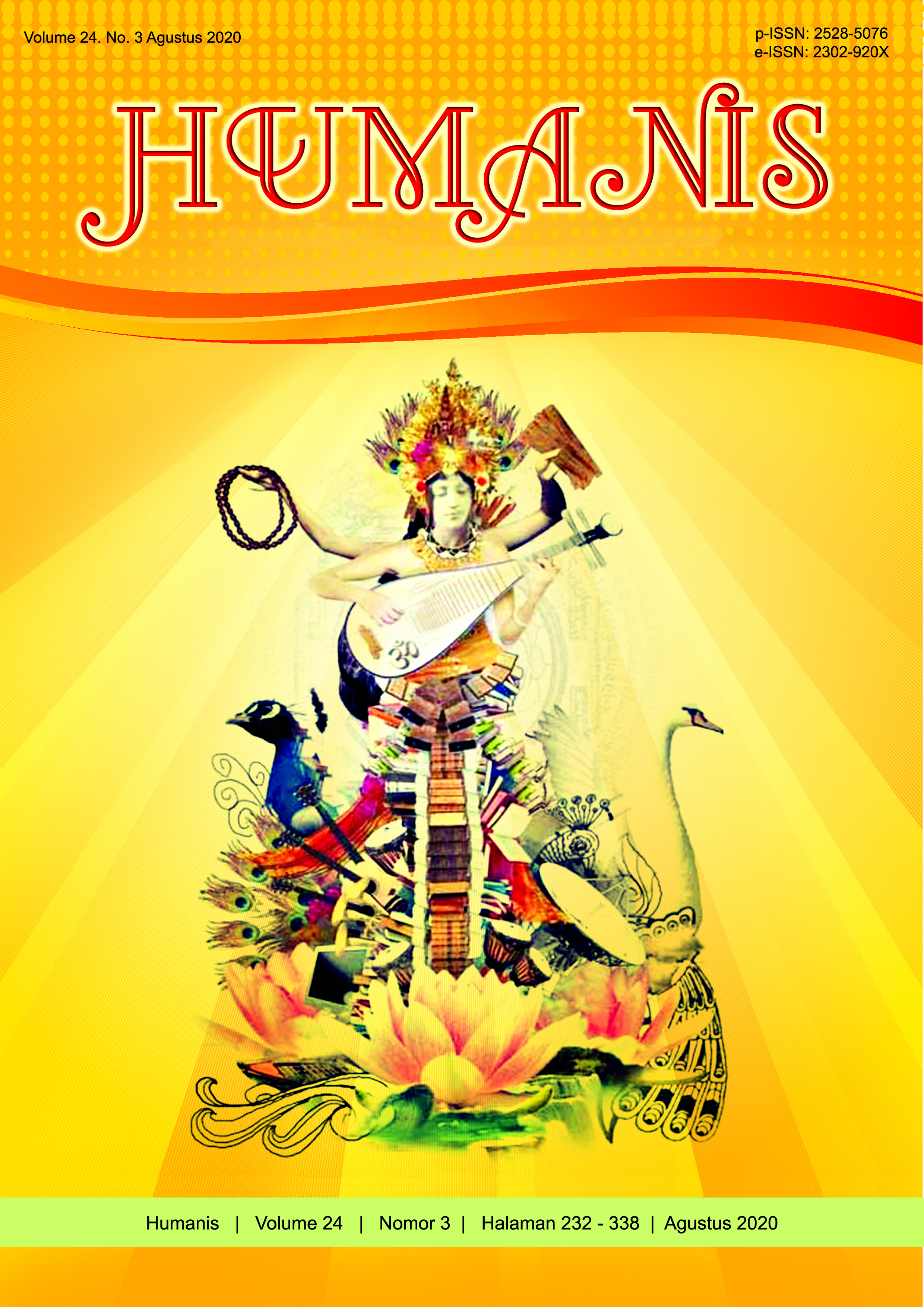Peranan Sanggar Watu Bo dalam Produksi Tenun Ikat Tradisional Desa Kajowair
Abstract
Watu Bo institut server as container of eduction and preserves by reproducing traditional woven cloth passed down from the ancestor using natural substance and dyes as well traditional loom loms, not machines (ATMB). The problem formula in this research covers (1) how was the traditional binding processin the Watu Bo Workshop?, (2) what is the Watu Bo’s strategic role in the existence of traditional Weaving?. As for the purpose of this study is (1) to know the traditional weaving works in the Watu Bo cage. (2) to identify Watu Bo’s strategic role against traditional weaving.The theory used in the study, the theory of production and the theory of role, because weavers in Watu Bo industries play a part in this traditional weaving work. But among the concepts that are used: roles, Watu Bo cage, and the production of zip looms. In this study the method in use is qualitative descriptive, with primary and secondary data sources, with data collection techniques through observation, interviews, and library studies.Results found in studies suggest that a Watu Bo clinic produces traditional weaving, using natural materials and dyes and using loom equipment instead of maschines to produce colth. Production products are sold booth local and foregin communities. Watu Bo’s cage plays strategic role in the traditional weaving of weaving; help to boots the family economy, preserving cultural heritage, passing on the rising generation, absorbing the peach of work, tourism, and helping to preserve the environment
Downloads
References
Koenjaraningrat. 2009. Pengantar Ilmu Antropologi. Jakarta: PT Ranika Cipta
Koentjaraningrat. 2014. Sejarah Teori Antropologi 1. Jakarta:UI Press.
Lanu, Veronika, dkk. 2016. “Peranan Buku Reverensi Pembuatan Tenun Ikat Tradisional bagi Kalangan Remaja di Kabupaten Sikka Kepulauan Flores sebagai Bentuk Pelestarian”. NTT: Art Nouveau Volume 5 No. 2: 1
Neonufa, Samrid, dkk. 2016. “Analisis Dampak pelatihan dalam Meningkatkan Kesejahteraan Keluarga Perempuan penenun”. NTT: Jurnal Pendidikan Volume 1 No 6: 1222
Nurcahyani, Lisyawati. 2018. “Strategi Pengembangan Produk Kain Tenun Ikat Sintang”. Kalimantan Barat: Jurnal Pendidikan dan Kebudayaan Volume 3 No. 1:60
Nurmeisarah, Trisna. 2015. “Tinjauan Tentang Tenun Tradisional Dusun Sade Desa Rambitan Kecamatan Pujut Kabupaten Lombok Tengah”. NTB: E-Journal Volume X No. 3: 5
Nurwati, Samsir. 2018. “Pelestarian Seni Budaya melalaui Home Industry Tenun Samarinda”. Kalimantan Timur: Jurnal el-Buhuth Volume 1 No. 1: 58
Osin, Rosvita, dkk. 2019. “Strategi Pengembangan Objek Wisata Kampung Tradisional Bena Kabupaten Ngada”. NTT: Jurnal ISSN Volume 14 No. 1: 10
Putra, Heddy Ahimsa. 2015. “Seni Tradisi, Jati Diri dan Strategi Kebudayaan”. Sumatra Barat: Jurnal Ilmu Sosial Mamangan Volume 2 No. 1:27
Setiadi, dkk. 2006. Ilmu Sosial Dan Budaya Dasar. Jakarta: Prenanda Media Group
Setiawan, Budi. 2014. “Strategi Pengembangan Tenun Ikat Kupang”. NTT: Jurnal Pendidikan dan Kebudayaan Volume 20 No. 3: 353
Wafiroh, Himmah. 2017. “Interaksi Sosial Wanita Pengrajin Tenun Ikat Troso dalam Kegiatan Pemberdayaan dan Kesejahteraan Keluarga (PKK)”. Jawa Tengah: Jurnal IJTIMAIYA Volume 1 No. 1:103
Wartiono, Totok., dkk. 2008. “Inovasi ATBM dengan Pengendali PLC (Prorgammble logic controlle) sebagai Alat Tenun Alternatif”. Solo: Jurnal ISBN Volume 2 No. 2: 121
Wijanah, Susinggih. 2016. “Aplikasi Pewarna Batik pada Tenun dari Serat Daun Nenas (Kajian Proporsi Jenis Benang dan Jenis Pewarna)”. Malang: Jurnal Teknologi dan Management Agroindustri Volume 5 No. 1:32


















